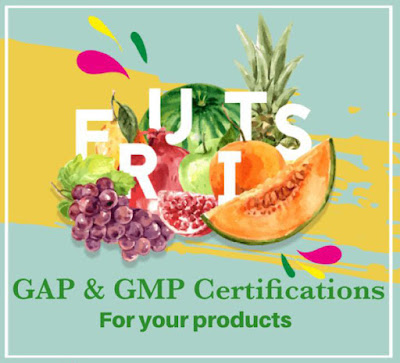ISO 22000
Food producers all over the world have a responsibility to make sure that their products are not harmful to consumers. Unsafe food can cause serious and fatal problems. In order to help them with this, the ISO 22000 food safety management system was developed by the International Organization for Standardization (ISO).
ISO 22000 helps food producers to identify and control food safety hazards and ensure that their products are safe for public consumption. In addition it helps products to cross country borders and bring to people the food that they can trust. ISO 22000 applies to any organization in the food chain, from farm to fork.
In simple words, you must take all possible actions to make sure that your foods are safe to use. though this is the simple meaning there are formal guidelines as mentioned below to follow in order to obtain the ISO 22000 certification.
- Develop a Food Safety Policy for the organization. You can refer some reputed companies such as Nestle and Coca-cola for food safety policy.
- State company objectives which inline with food safety policy.
- Appoint a group of qualified individuals as a Food Safety Team.
- Define communication methods so as to ensure effective communication with external (regulatory, customers, suppliers, and others) and internal communication.
- Have an emergency plan for the organization.
- Develop a Food Safety Management System (FSMS) and record all activities.
- Hold management review meetings where the performance of the Food Safety Management System will be evaluated.
- Provide adequate and up to date resources for the effective operation of the Food Safety Management System. These include trained and qualified personnel, sufficient infrastructure, effective tools, and optimal work environment to ensure food safety.
- Implement Prerequisite Programs like construction and layout of building, layout of premises and workspace, availability of utilities - air, water, energy, and waste disposal.
- Follow HACCP principles.
- Set up a traceability system for identification of product.You can use batch numbers, bar-code, or any other serial number for this.
- Set up a corrective action system and control of nonconforming product.
- Maintain a documented procedure for handling withdrawal of product.
- Maintain monitoring and measuring devices in good condition with relevant certifications.
- Conduct an internal audit program.
- Update and improve the Food Safety Management System continuously.
As mentioned above ISO 22000 required a documented Food Safety Management System for their organisation. This system simply addresses the following points:
- Availability of Effective Prerequisite Programs that ensure a clean sanitary environment.
- A Hazard Analysis and Critical Control Plan that will be implemented to identify, prevent, and eliminate food safety hazards.
- Documented food safety management system processes that will be followed when managing food safety throughout the organization.
ISO is developing additional food safety management standards that are related to ISO 22000. These standards will be collectively known as the ISO 22000 family of standards. Currently, this family of standards consists of the following standards:
- ISO 22000 - Food safety management systems.
- ISO 22001 - Guidelines on the application of ISO 9001:2000 for the food and drink industry.
- ISO/TS 22002- Prerequisite programmes on food safety.
- ISO TS 22003 - Guidelines for bodies providing audit and certification of food safety management systems.
- ISO TS 22004 - Guideline to application of ISO 22000:2005.
- ISO 22005 - Guidelines for traceability in the feed and food chain.
- ISO 22006 - Quality management systems.
Occupational Safety and Health Administration OSHA
OSHA is an important as well as somewhat easy certificate to obtain for any organization. Occupational Safety and Health Administration (OSHA) issue guidelines which are for employers to follow in order to protect their employees from work related hazards. Therefore OSHA's duty is to ensures that employees are working in a safe and healthful environment. There are different OSHA standards for different industries, for example,
- OSHA standards for construction work.
- OSHA standards for maritime operations.
- OSHA standards for general industry (which applies to most worksites)
In general, all of these standards direct for establishing safe practices within the organization which will eventually increase the safety and health condition of employees. if you follow general conditions which are mentioned below in your organization, it will not be difficult to get the OSHA certificate for your organization.
- provide fall protection. you can cover all trenches, display warning signs and provide fall protection equipment for employees.
- prevent infectious diseases.
- prevent unsafe exposure to harmful substances like asbestos or chemicals. provide relevant personal protective equipment (PPE).
- put guards on dangerous machines, specially moving machines.
- provide formal training for employees who are performing high risk works.
- keep accident record book and update with preventive actions for all kind of previous accidents.
- provide necessary sanitary facilities such as clean toilets and bathrooms.
If you can make the organization environment as per all the above general OSHA guidelines, you will be qualified to obtain OSHA Certification. These standards are constantly updated. You can get a full list of current OSHA standards from their website.











